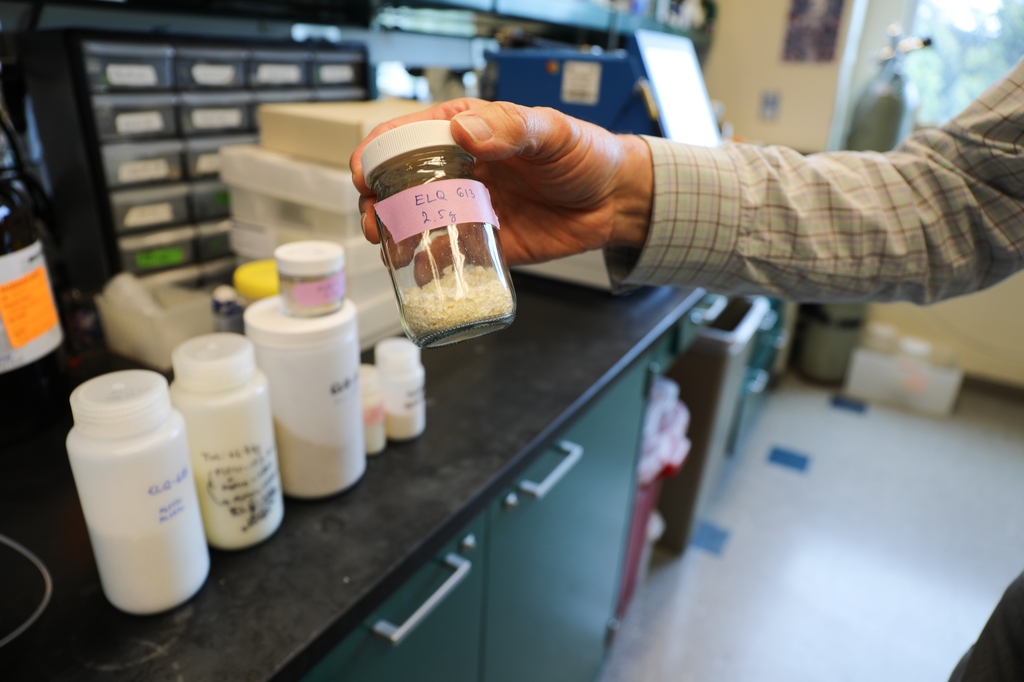
Researchers have identified a type of chemical compound that, when applied to insecticide-treated bed nets, appears to kill the malaria-causing parasite in mosquitoes.
Published today in the journal Nature, the multi-site collaborative study represents a breakthrough for a disease that continues to claim more than half a million lives worldwide every year. A lab at Oregon Health & Science University played a key role, and National Institute of Allergy and Infectious Diseases, of the National Institutes of Health, supported the research.

Michael Riscoe, Ph.D., professor of molecular microbiology and immunology in the OHSU School of Medicine, designed and synthesized the anti-malarial drugs, termed ELQs, that were then screened in the lab of Flaminia Catteruccia, Ph.D., the study's senior author and Irene Heinz Given Professor of Immunology and Infectious Diseases at the Harvard T.H. Chan School of Public Health.
ELQ drugs refer to a class of experimental antimalarial drugs known as endochin-like quinolones.
"It was a very clever and novel idea by Dr. Catteruccia and her colleagues to incorporate anti-malarial drugs into bed nets and then to see if the mosquitoes would land on the nets and take up the drug," Riscoe said. "The idea is the drug kills the parasites that cause malaria instead of the mosquitoes, and our data shows this works."
Risco said further research is necessary to determine whether the best strategy in the field is to incorporate the antimalarial ELQs together with insecticides in the fibers that are woven into bed nets or simply to use them alone to blunt disease transmission.
Malaria is a potentially lethal infection that is spread from person to person by mosquitoes. After a significant decline in cases and deaths caused by malaria since the turn of the century, progress has stalled in recent years due to increasing insecticide resistance. In 2023 alone, there were 263 million new cases of malaria worldwide and more than half a million deaths.
"Insecticide resistance is now extremely common in the mosquitoes that transmit malaria, which jeopardizes many of our most effective control tools," said Alexandra Probst, M.Pharm, lead author of the study and a Ph.D. candidate in Catteruccia's lab at Harvard. "By targeting malaria-causing parasites directly in the mosquito, rather than the mosquito itself, we can circumvent this challenge and continue to reduce the spread of malaria."
Catteruccia's lab screened 81 compounds for blocking malaria parasite growth within the mosquito. This work identified two ELQ drugs from Riscoe's chemical collection as top hits from the initial screen. The ELQs were even effective when added to materials like those used in mosquito nets.
Tests showed infected mosquitoes that landed on the surface of these materials were cured of their infections. The ELQs remained stable, continued to work for a long time and were effective even in mosquitoes that were resistant to traditional insecticides.
"If an infected mosquito hits or lands on netting containing either of the ELQs, it's essentially disinfected. It absorbs the treatment via its legs, and that kills the parasites that it's carrying," said Mike Rubal, Ph.D., a scientist at the Southwest Research Institute in San Antonio, Texas, who contributed to the Nature article. "The best defense against malaria has been insecticide-treated bed nets, but mosquitoes are developing a resistance to those prevention methods. This novel approach targets the source of the disease."
The next step is to test this strategy in the field with ELQ-impregnated bed nets, which is set to begin later this year.
"This work has potential to significantly blunt the transmission of malaria," Riscoe said. "I think that it will evolve and develop to be a key element to our success in eradicating malaria around the world."
Research reported in this publication was supported by the National Institute of Allergy and Infectious Diseases of the National Institutes of Health, Award numbers R01AI148646, R01AI153404, R01AI100569, and R01AI141412, as well as Veterans Health Administration, Office of Research and Development Program Award i01 BX003312 and VA Research Career Scientist Award 14S-RCS001, and by the U.S. Department of Defense Peer Reviewed Medical Research Program PR181134. This content is solely the responsibility of the authors and does not necessarily represent the official views of the National Institutes of Health or any other funders.
In our interest of ensuring the integrity of our research and as part of our commitment to public transparency, OHSU actively regulates, tracks and manages relationships that our researchers may hold with entities outside of OHSU. In regard to this research, OHSU's Riscoe and Aaron Nilsen have submitted a patent application (provisional patent application number 63/651,852) on the use of ELQ prodrugs deposited on surfaces for mosquito-targeted malaria-transmission blocking. Review details of OHSU's conflict of interest program to find out more about how we manage these business relationships.






